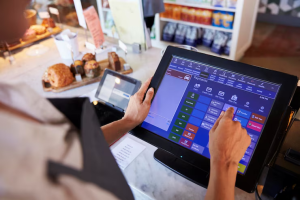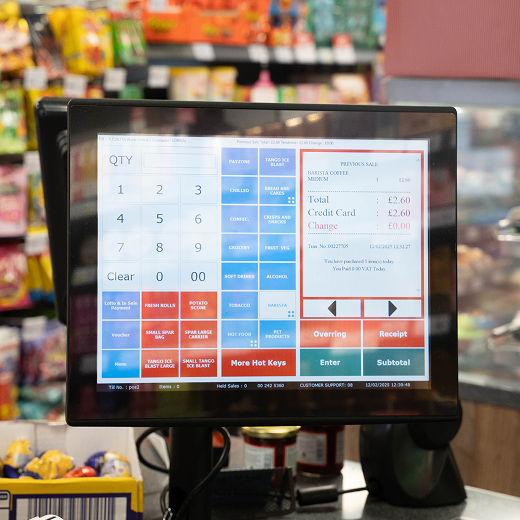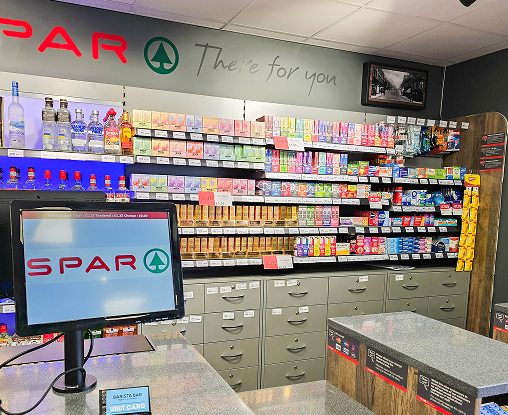In today’s fast-evolving retail and hospitality environment, efficient, reliable Electronic Point of Sale (EPOS) systems are essential for businesses striving to remain competitive. According to the UK Retail Tech Market Report 2024, over 70% of UK retailers and hospitality businesses now rely on EPOS systems to process transactions, manage inventory, and gather customer insights, a significant jump from just 45% five years ago. This rapid adoption is driven by consumer demand for faster checkouts, personalised experiences, and seamless online-offline integration.
However, with a broad range of EPOS options available from budget-friendly subscriptions to fully customised enterprise solutions, understanding the true cost of an EPOS system can be overwhelming. Costs can vary dramatically based on hardware specifications, software features, business size, and ongoing support requirements.
This comprehensive guide breaks down the cost components of EPOS systems in the UK for 2025, providing verified figures, comparative tables, and visual aids to help you make the best investment decision for your business.
What is an EPOS System?
An EPOS system is a combination of hardware and software designed to efficiently handle sales transactions, inventory management, customer data, and business reporting in real-time. Unlike traditional cash registers, modern EPOS systems offer:
- Real-time sales and stock analytics
- Multi-channel integration (online and physical stores)
- Automated inventory alerts
- Customer loyalty and CRM features
- Employee management and scheduling
The integration of these functions helps businesses improve operational efficiency, reduce human error, and provide better customer service.
Factors Influencing EPOS Costs In the UK
Several key factors influence the total cost of implementing an EPOS system. Understanding these will help you budget effectively:
Business Size and Type
The scale of your business significantly impacts your needs and costs. A small independent coffee shop may only require a simple EPOS system with a single terminal and basic features. In contrast, a multi-branch retail chain will need multiple terminals, advanced inventory management, and multi-user capabilities, all of which increase costs.
Hardware Requirements
The hardware is the physical equipment needed to operate the EPOS system. This typically includes touch screen terminals, receipt printers, barcode scanners, cash drawers, and card readers. The quality and quantity of these devices will affect your upfront costs. For example, rugged industrial scanners cost more than basic models but are more durable for high-volume retail environments.
Software Features
EPOS software varies in complexity. Basic software allows simple transaction processing and sales recording, suitable for small businesses. More advanced software may include inventory tracking, customer relationship management (CRM), detailed reporting, multi-location support, employee management, and integrations with online stores or accounting software. Advanced features generally come with higher monthly subscription fees.
Customisation and Integration
Tailoring the EPOS system to your specific business processes, for instance, adding unique payment options, loyalty schemes, or integrating with other business tools like ERP systems, can increase costs. Customisation requires specialist knowledge and time, so expect additional fees.
Support and Maintenance
Ongoing support is crucial to keep your EPOS system running smoothly. This includes regular software updates, technical support for troubleshooting, and hardware repairs or replacements. Some providers bundle support into subscription fees, while others charge separately.
EPOS Cost Breakdown in the UK (2025)
Understanding the cost structure of an EPOS system is essential for any business considering this technology investment. The total expenditure involves several components, including hardware, software, installation, and ongoing maintenance. Each of these elements can vary widely depending on the scale of your operations, the complexity of your requirements, and the level of sophistication you need. In 2025, the UK market offers a broad spectrum of options, from budget-friendly, plug-and-play solutions suitable for small businesses, to comprehensive, customisable systems designed for larger enterprises with multiple locations. This breakdown provides a clear overview of typical costs you can expect, helping you plan your budget wisely and choose an EPOS system that fits both your operational needs and financial capacity.
1. Hardware Costs
Hardware makes up the initial capital expenditure of an EPOS system. Below are typical price ranges for common components:
| Hardware Component | Typical Price Range (GBP) | Features |
| Touchscreen Terminals | £300 – £1,200 | Higher-end models for heavy use are costlier |
| Receipt Printers | £100 – £400 | Thermal printers preferred for speed and reliability |
| Barcode Scanners | £50 – £700 | Wireless and industrial scanners cost more |
| Cash Drawers | £50 – £200 | Durability affects price |
| Card Readers | £19 – £150 | Contactless/NFC readers are more expensive |
- Touchscreen Terminals: £300 to £1,200 each. Higher-end models offer faster processing, better durability, and larger screens.
- Receipt Printers: £100 to £400. Thermal printers are most common; prices vary by print speed and connectivity options.
- Barcode Scanners: £50 to £700. Basic handheld scanners are affordable, while advanced fixed or wireless scanners cost more.
- Cash Drawers: £50 to £200. Durability and locking mechanisms affect price.
- Card Readers: £19 to £150. NFC/contactless readers tend to be pricier.
For example, EPOS Direct offers a full hardware package with a 15″ touchscreen terminal, receipt printer, cash drawer, and software license starting around £1,199 + VAT, with flexible monthly payment plans available.
2. Software Costs
EPOS software pricing generally falls into subscription tiers, allowing businesses to choose based on features:
| Plan Type | Monthly Cost (GBP) | Features Included |
| Basic | £20 – £50 | Sales, basic reporting, simple inventory |
| Standard | £50 – £100 | Advanced inventory, multi-user, integrations |
| Premium | £100+ | CRM, loyalty programmes, detailed analytics |
- Basic Plans: £20 to £50 per month, usually covering essential functions like sales processing and basic reporting.
- Standard Plans: £50 to £100 per month, adding inventory management, multi-user access, and integrations.
- Premium Plans: Over £100 per month, including advanced analytics, CRM, loyalty programmes, and multi-location management.
Providers like Epos Now offer entry-level software at £25/month, with bundled hardware options at additional cost.
3. Installation and Setup Fees
Some providers charge for installing and configuring your EPOS system, especially if it requires network setup or hardware installation. Typical fees include:
| Service | Typical Cost (GBP) | Details |
| Installation | £100 – £1,000 per terminal | Varies with site complexity and number of terminals |
| Staff Training | £50 – £500 | Ensures smooth transition and user proficiency |
| Network Setup | £100 – £1,000 | Essential for multi-terminal or multi-location setups |
- Installation: £100 to £1,000 per terminal, depending on complexity.
- Staff Training: £50 to £500, to ensure your team can use the system effectively.
- Network Setup: £100 to £1,000, particularly if integrating multiple locations or devices.
Some vendors include basic setup in the package price, but bespoke installations often incur extra charges.
4. Ongoing Maintenance and Support
After setup, maintenance is key to avoid downtime:
| Support Type | Cost Range (GBP) | Features |
| Software Updates | Usually included in subscription | Providers often include updates free of charge |
| Technical Support | £20 – £300 per month | Varies by service level |
| Hardware Maintenance | £50 – £150 per visit | Includes repairs, replacements |
| Payment Processing Fees | 1% – 3% per transaction | Depends on payment provider |
- Software Updates: Usually included with subscription plans.
- Technical Support: £20 to £300 per month, depending on the level of service.
- Hardware Maintenance: £50 to £150 per visit, covering repairs or replacements.
- Payment Processing Fees: Typically 1% to 3% per transaction, depending on your payment provider.
Total Cost Estimates
Combining all elements, here’s an approximate annual budget breakdown for different business sizes:
| System Type | Initial Cost (GBP) | Annual Ongoing Cost (GBP) | Suitable For |
| Basic | £1,000 – £2,500 | £240 – £1,200 | Small cafés, start-ups |
| Mid-Range | £2,000 – £4,000 | £720 – £1,800 | Medium-sized retail or hospitality |
| High-End | £4,000+ | £1,200+ | Large businesses, multi-locations |
- Basic System: Initial costs between £1,000 and £2,500, plus £240 to £1,200 in annual subscriptions and support.
- Mid-Range System: Initial costs of £2,000 to £4,000, with annual costs ranging from £720 to £1,800.
- High-End System: £4,000+ upfront, with £1,200+ annual fees, suitable for larger businesses with multiple terminals and advanced features.
EPOS Providers in the UK
Choosing the right EPOS provider is crucial for your business’s success, as it impacts daily operations, customer experience, and overall efficiency. The UK market offers a diverse range of EPOS solutions catering to different business sizes, sectors, and budgets. Here’s a detailed look at some of the leading providers you can consider in 2025:
Square
- Software: Free to use, Square offers its EPOS software at no cost, making it highly accessible.
- Hardware: Card readers start at around £19. Additional hardware like terminals and printers are available but sold separately.
- Transaction Fee: Typically 1.75% per payment (standard rate for UK businesses).
- Ideal For: Small businesses, sole traders, mobile vendors, and startups seeking a simple, low-cost, and user-friendly payment processing solution.
Why Choose Square?
Square has earned a strong reputation in the UK for its ease of use and affordability. It’s an excellent option if you want to avoid large upfront hardware costs and just need a reliable, portable way to accept card and contactless payments. It’s particularly popular with market stalls, coffee shops, and freelancers due to its plug-and-play nature and transparent pricing.
Lightspeed
- Plans:
- Basic: £75/month
- Core: £149/month
- Plus: £189/month
- Basic: £75/month
- Ideal For: Retailers, boutiques, and businesses with complex inventory needs or multiple product categories.
Why Choose Lightspeed?
Lightspeed is a powerful, feature-rich EPOS system known for its advanced inventory management, robust sales reporting, and multi-store capabilities. The subscription plans scale with your business, offering more sophisticated features like customer relationship management (CRM), detailed analytics, and eCommerce integration on higher tiers. It is well-suited for medium to large retail businesses that require deep control over stock and sales processes.
Epos Now
- Software: Starts at £25/month.
- Hardware Rental: Bundled packages available at around £79/month (hardware plus software).
- Ideal For: Retail and hospitality businesses seeking flexible subscription-based solutions with hardware rental options.
Why Choose Epos Now?
Epos Now is one of the most popular EPOS providers in the UK, especially among small to medium-sized enterprises. Its model allows businesses to rent hardware, reducing upfront capital expenditure, while providing comprehensive software that covers sales, stock, and employee management. The system supports multiple integrations, including payment processors and accounting software, making it ideal for growing hospitality venues and retail shops.
Mobo EPOS
- Rental Packages:
- Startup: £17/week
- Business: £22/week
- Business+: £30/week
- Startup: £17/week
- Purchase Options:
- Small Business Offer: £995 + VAT
- Business Package: £1,195 + VAT
- Small Business Offer: £995 + VAT
Ideal For: Businesses that prefer flexible rental options or lower upfront purchase costs, such as independent retailers or seasonal operations.

Why Choose Mobo EPOS?
Mobo EPOS stands out for its rental flexibility, making it accessible for businesses that want to avoid large upfront investments or need temporary EPOS setups (e.g., pop-up shops). The rental packages include hardware and software with options for upgrades and support. Its straightforward system supports retail and hospitality sectors with essential features such as stock control, sales reports, and customer management.
TISSL
- Licensing Costs:
- 5 Users: £60/month
- 10 Users: £115/month
- 20 Users: £220/month
- 5 Users: £60/month
- Ideal For: Mid-sized enterprises and multi-location retailers that require user-based licensing models and strong scalability.
Why Choose TISSL?
TISSL specialises in providing EPOS solutions with user-based licensing, which means costs scale according to how many employees or terminals access the system. This model is excellent for businesses with many staff members needing simultaneous access or for chains managing multiple locations under one central system. TISSL EPOS also focuses heavily on security and compliance, which appeals to retail chains with strict regulatory requirements.
MPOS: The EPOS System Built for UK Retailers Who Want More Than Just a Price Tag
While many EPOS providers focus heavily on upfront costs and subscription fees, MPOS takes a different approach, it’s all about the value, efficiency, and profit uplift you get from a system designed specifically for retailers and convenience stores.
Built By Retailers, For Retailers
MPOS is developed by MHouse Business Solutions Ltd, a UK-based company with 40+ years of experience, trusted by over 1,200 clients and powering more than 2,000 tills. Unlike generic systems, MPOS’s full-service EPOS is tailored to the unique workflows and challenges of convenience stores, aiming to boost your sales, streamline your operations, and optimise every part of your store.
Proven Profit Uplift and Business Impact
- Earn up to £23,000 more per year from your convenience store (based on an average £15,000 weekly turnover).
- Demonstrated 3% gross profit uplift, even with a single till setup.
Access to the SuperPLOF Master Product Database with over 500,000 products, helping you maintain accurate stock and pricing.

Feature-Rich System Designed to Increase Your Bottom Line
Unlike many EPOS providers that charge separately for add-ons or advanced features, MPOS includes a comprehensive suite of tools that save you time and money:
- Single-screen multi-site management for easy control of multiple stores.
- Seamless integration with all major wholesalers (Spar, Nisa, United, Morrisons Daily, and more), enabling automatic order creation and invoice downloads.
- Multiple payment methods, including credit/debit card integration, speeding up checkout and improving customer satisfaction.
- Accurate sales reconciliation and detailed reporting help you make smarter, data-driven decisions.
- No system downtime, ensuring your store is always operational.
UK-Based Support and Smooth Onboarding
MPOS’s dedicated UK-based technical team offers overlapping shift coverage aligned with your working hours, so help is just a call away whenever you need it. Plus, MPOS provides hands-on training and support during installation and after, making sure your transition is smooth and disruption-free.
Flexible Pricing That Scales With You
While MPOS does not list fixed pricing, their approach focuses on flexible, tailored packages that adapt to your store’s size and needs, from a single lane system to multi-terminal, multi-site setups. This flexibility means you only pay for what you actually need, with a clear focus on maximising your return on investment rather than just the upfront cost.
How MPOS Compares to Other EPOS Systems
| Feature / Benefit | MPOS | Other Providers |
| UK-Based Support | Yes, with overlapping working hours | Varies; often outsourced |
| Integration with Major Wholesalers | Yes, extensive & automated | Limited or manual integration |
| Proven Profit Uplift | Up to £23,000 per year / 3% uplift | Rarely quantified publicly |
| Product Database Size | 500,000+ products | Smaller or no central database |
| Multi-site Management | Single-screen for multi-site control | Available, but often complex |
| Payment Methods | Multiple integrations including card terminals | Standard payment options |
| Downtime | Near zero downtime | Varies, often occasional outages |
| Flexibility in Pricing | Tailored to store size & needs | Fixed plans or rigid tiers |
| Installation & Training | Included with full support | Often extra cost |
MPOS isn’t just another EPOS system, it’s a strategic business partner designed to drive real, measurable growth for UK convenience stores. If you want a system that combines decades of retail expertise, cutting-edge technology, and personalised UK support, while maximising your profitability and operational efficiency, MPOS deserves serious consideration.
Choosing the Right EPOS System
When deciding on an EPOS system, consider:
- Business Size: Smaller businesses often choose affordable, easy-to-use platforms like Square or Mobo EPOS. Larger operations usually need more comprehensive systems like Lightspeed or Epos Now.
- Industry Requirements: Retailers generally require detailed stock management and e-commerce integration. Hospitality businesses may prioritise table management and order tracking.
- Budget: Balance upfront investment with ongoing subscription and maintenance costs.
- Essential Features: Identify your business’s critical features, e.g., loyalty schemes, multi-location support, or accounting software integration, and ensure your chosen system offers them.
The Road Ahead
Investing in the right EPOS system in 2025 is crucial for UK businesses to maintain operational efficiency, improve customer experience, and gain competitive advantage. With over 70% of retailers now relying on EPOS systems, the technology is a proven enabler of growth and streamlined operations. However, costs vary widely based on business size, hardware choices, software sophistication, and support needs.
Understanding the breakdown of expenses, from the initial outlay on terminals and scanners to the monthly fees for software and support, empowers you to select a system that aligns perfectly with your budget and business model. Whether you’re a small café seeking a cost-effective solution or a multi-site retailer needing advanced reporting and integrations, the market offers flexible options to fit your needs.
Keep in mind that a well-chosen EPOS system is not just a purchase but a strategic investment. It can unlock insights into customer behaviour, automate inventory management, and enhance staff productivity, all contributing to improved profitability and business growth. As technology evolves, future-proofing your investment with scalable and integrable systems will help your business adapt smoothly to changing market demands.
By carefully weighing the factors discussed and utilising this comprehensive cost guide, you can confidently navigate the EPOS market in 2025 and choose a solution that delivers excellent value, efficiency, and long-term success.















